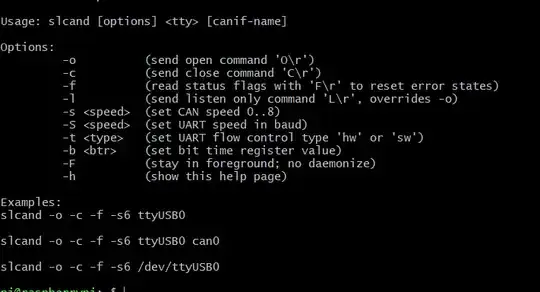I connect a USB to CAN controller via CDC as a virtual port to my computer and interface it via slcan from the can-utils package. So far so good.
What I would like to understand is, why the elinux suggests to use in general 3Mbit/s for the (virtual) serial interface
sudo slcand -o -s8 -t hw -S 3000000 /dev/ttyUSB0
by writing -S 3000000, while the CAN bus speed is set with -s8 to the maximum CAN bus speed of 1 Mbit/s. It describes how the CAN baudrate may be adjusted, but there is no info about the UART baudrate.
The article does not explain, why 3 Mbit/s are selected and I am used to baudrates not being "smooth" (as also seen there: Standard UART rates electronics stackexchange
When I look at the slcand --help

I wonder why the UART speed is not listed in the examples at all. What is the default rate?
Can you please help me to understand this?
( I just thought I ask, who does not ask never knows)
– spaceKelan Nov 30 '23 at 00:15